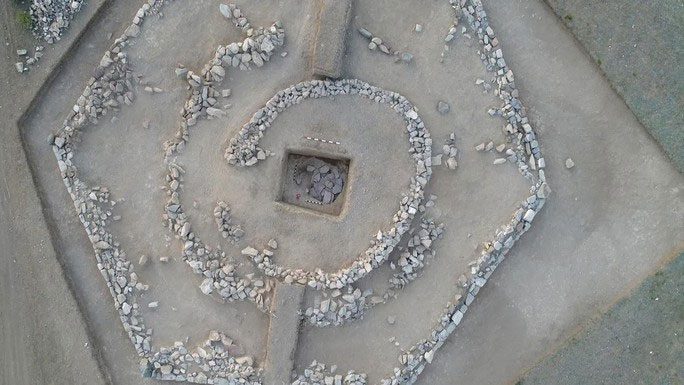According to a statement from the Eurasian National University in Kazakhstan, this pyramid “is unlike anything” ever found on the Eurasian steppe.
As reported by Live Science, archaeologists have described the recently discovered structure in Eastern Kazakhstan as a pyramid, although it is quite different from Egyptian pyramids. However, it also serves as a burial site for the nobility, similar to the way Egyptian pyramids were used.

The hexagonal structure believed to be the base of an ancient pyramid – (Photo: EURASIAN NATIONAL UNIVERSITY).
Unlike the pyramids of North Africa or the Maya pyramids in the Americas, this pyramid located in Central Asia has a hexagonal base instead of a square one.
According to Dr. Ulan Umitkaliyev, head of the Department of Archaeology and Ethnology at the Eurasian National University, this pyramid was constructed using stone, with massive blocks weighing up to 1 ton placed at each corner.
The remains of the structure include 3-meter-high stone walls, creating a small maze with an ancient tomb at its center.
Although the structure found does not have a roof, and it cannot be determined whether it ever had a stone roof, archaeologists still believe it is a type of pyramid, as there is a large artificial mound above the stone structure.
The hexagonally arranged walls surrounding the pyramid are also intricately decorated with stone carvings or other forms of artwork, primarily depicting animals such as camels and horses.
Some jewelry and funeral pottery have been discovered, but the research team did not clarify whether human remains had been identified.
The excavation and analysis of artifacts are still ongoing following this preliminary announcement.
The people living in this region at the time the pyramid was built—around 3,800 years ago—also constructed many stone tombs and monuments, and they were well-known for their goldsmithing skills. The backbone of the economy may have been the herding of large livestock herds.


















































